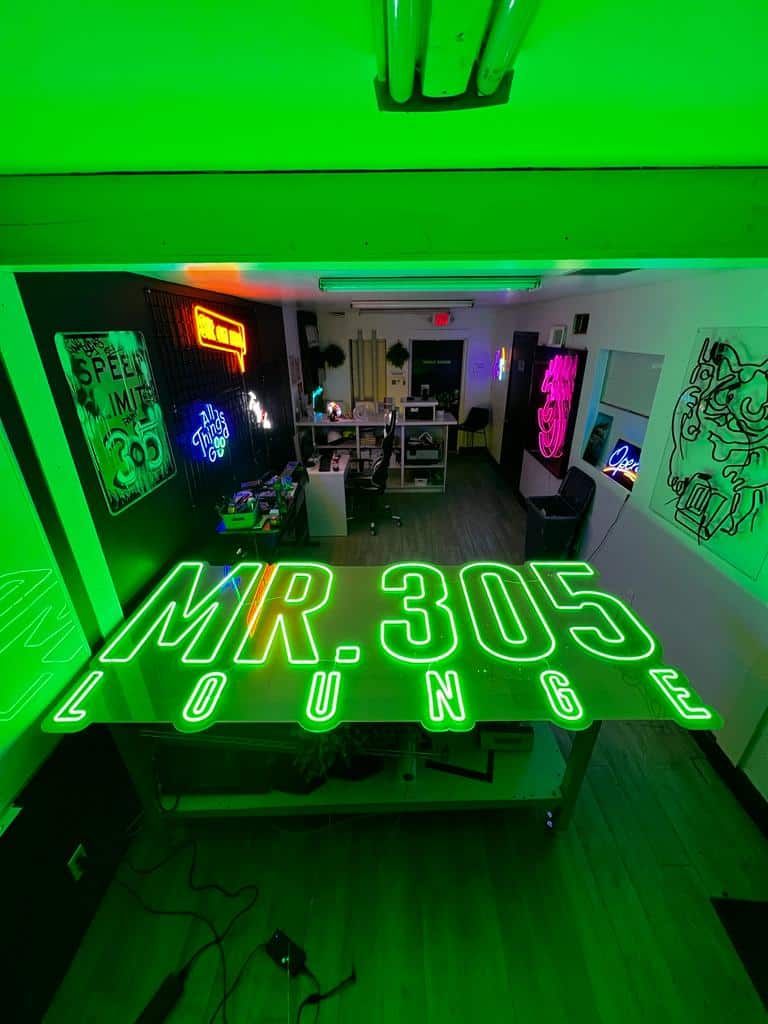Neon signs are the perfect tool to attract attention and add a glowing glow to any space. Through all these years, neon signs evolved, and modern LED neon signs have emerged to compete with traditional glass neon signs. The article has dived into differences, advantages, and disadvantages to help you decide which type is the better choice for you.
Understanding Glass Neon Signs
Glass neon signs are the classic option that most people think of when they hear about vintage diners, bars, and theaters. These signs are made from glass tubes filled with neon or other gases. When electricity passes through the gas, it gives off a brilliant and colorful glow.
Glass Neon Signs Features
Handcrafted Design: Glass neon signs are made by very skilled professionals, so each piece is unique.
Bright Colors: They offer a soft yet bright glow in various colors.
Timeless Appeal: These signs have a retro appeal that is hard to match.
Understanding LED Neon Signs
LED neon signs are the modern version. Instead of glass tubes, they use flexible LED strips covered with silicone or PVC to create a neon-like effect. These signs mimic the look of traditional neon but are more energy-efficient and durable.
Features of LED Neon Signs
Customizable Shapes: LED strips can be molded into intricate designs.
Energy Efficiency: They consume significantly less energy compared to glass neon signs.
Lightweight and Safe: Made from durable materials, they are easy to handle and less likely to break.
Glass Neon Signs Vs LED Neon Signs: Key Comparisons
1. Brightness and Color
Glass Neon Signs: Famous for their rich, warm glow and vibrant colors that evoke nostalgia.
LED Neon Signs: They provide a uniform brightened glow and can switch through various colors and effects to achieve multi-color options.
Glass Neon Sign Winner: Bright Class winner, LED neon sign the color choice winner
2. Energy Efficiency
Glass neon sign: High voltage supply will make them consume more energy as compared to LED ones
LED neon sign: Quite energy efficient as they do up to 80% less power than glass types.
Winner: More eco-friendly and affordable to operate
3. Longevity and Upkeep
Glass Neon Signs: They have glass tubes that are breakable and brittle. These signs also sometimes need upkeep in the way of re-gassing
LED Neon Signs: Their material makes them non-brittle and can sustain a hit. Also longer lasting than the former
Winner: LED neon signs in this aspect.
4. Personalization
Glass Neon Signs: Possible to have intricate, handcrafted designs but limited due to the complexity of shaping glass tubes.
LED Neon Signs: Can have various designs, including modern, creative shapes.
Winner: LED neon signs for much greater design flexibility.
5. Cost
Glass Neon Signs: Expensive; it is due to material and craftsmanship.
LED Neon Signs: More affordable for both the short and long-run terms since it has lower costs in terms of maintenance and energy.
Winner: LED neon signs for more affordable choices.
6. Environmental Impact
Glass Neon Signs: Have gases that may poison the environment if not disposed of well.
LED Neon Signs: Don’t use hazardous gases and are more environmentally friendly.
Winner: LED neon signs for a greener option.

Which Sign is Better for Different Purposes?
Glass Neon Signs Are Suitable For:
Bars and Restaurants: It creates a cozy, nostalgic atmosphere.
Artistic Displays: It gives a handmade, unique appearance.
Historic Preservation: Preserving the integrity of older buildings.
LED Neon Signs Are Great For:
Business Signs Near Me: A long-lasting, practical option for storefronts.
Home Decor: Excellent for trendy, personalized designs in homes.
Events and Shows: Light and portable for temporary installs.
Advantages and Disadvantages of Glass and LED Neon Signs
Glass Neon Signs
Advantages:
Authentic, retro look.
It gives a soft, warm glow.
Disadvantages:
Fragile and must be handled with care.
Uses more electricity.
LED Neon Signs
Advantages:
Long-lasting and safe to use.
Offers endless customization options.
Energy-efficient and eco-friendly.
Making the Right Choice
When choosing between glass neon and LED neon signs, consider your priorities:
If you value authenticity and vintage charm, glass neon signs are the way to go.
For practicality, energy efficiency, and durability, LED neon signs are the better choice.
Think about where you will place the sign and what impression you wish the sign to make.
How to Find a Suitable Sign Maker
You can find the right experts to help you choose the right sign by searching for terms such as “Signs Company Near Me“, “Signs Near Me“, or “Business Signs Near Me“. Whether you want an advertisement for your business or just a decorative sign, a professional company will ensure your sign stands out.
Conclusion
Glass neon signs and LED neon signs have their own unique appeal and advantages. Glass neon has a nostalgic glow, ideal for traditional settings, while LED neon signs offer modern versatility, durability, and cost-effectiveness.
Evaluate your needs, budget, and style preferences before making a decision. With the right sign, you can create an eye-catching display that enhances any space. Whether you choose neon or LED, make sure it reflects your personality or brand in the best way possible!



